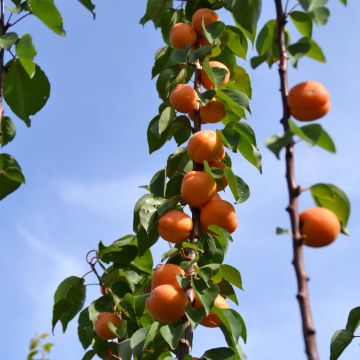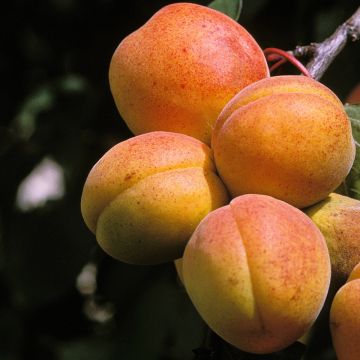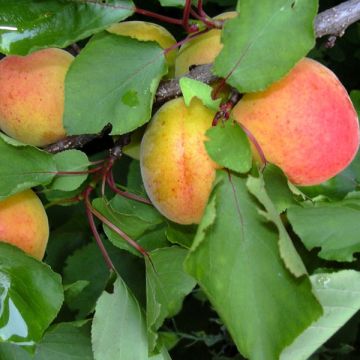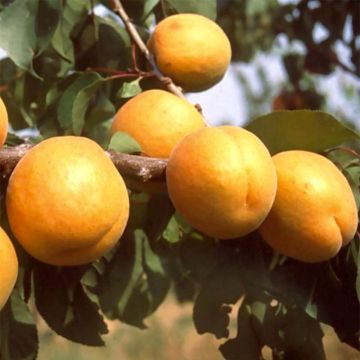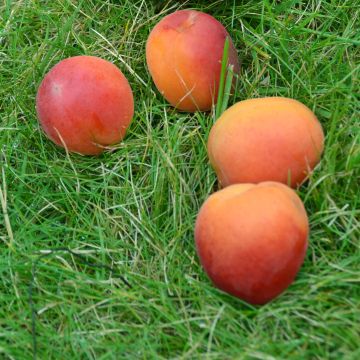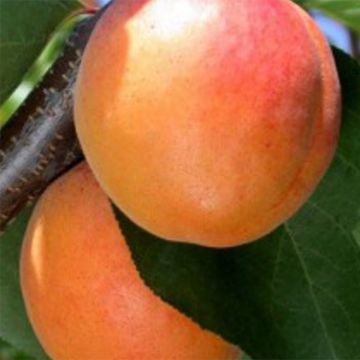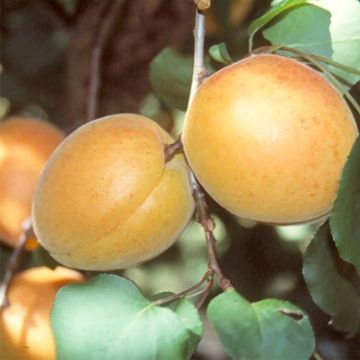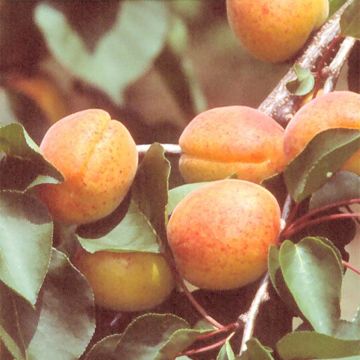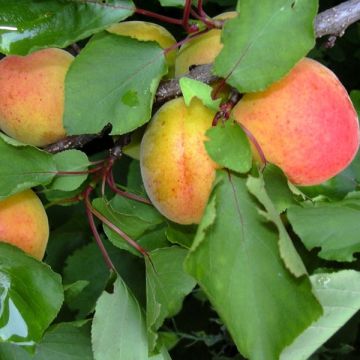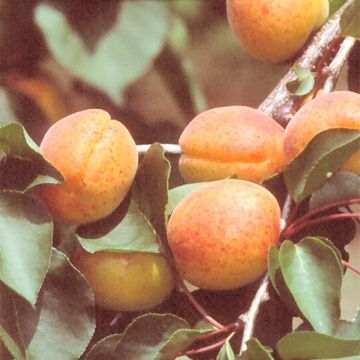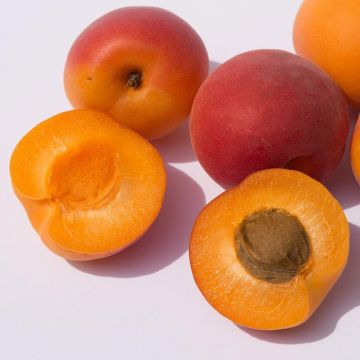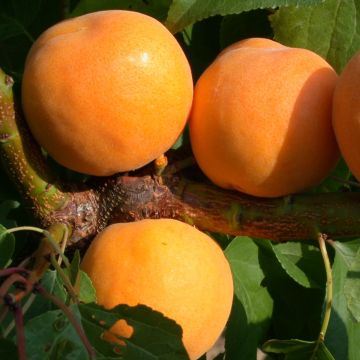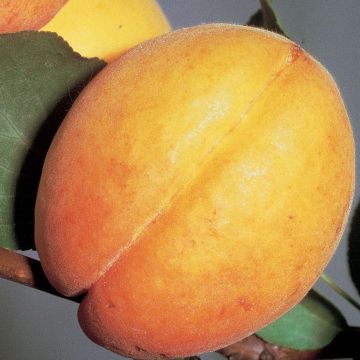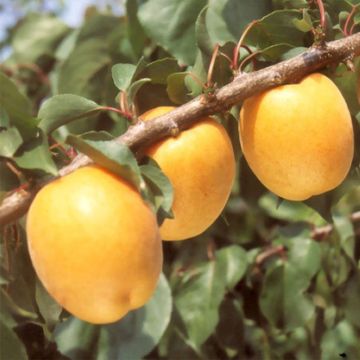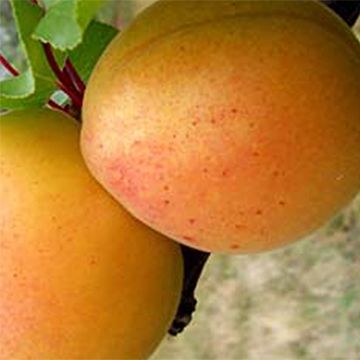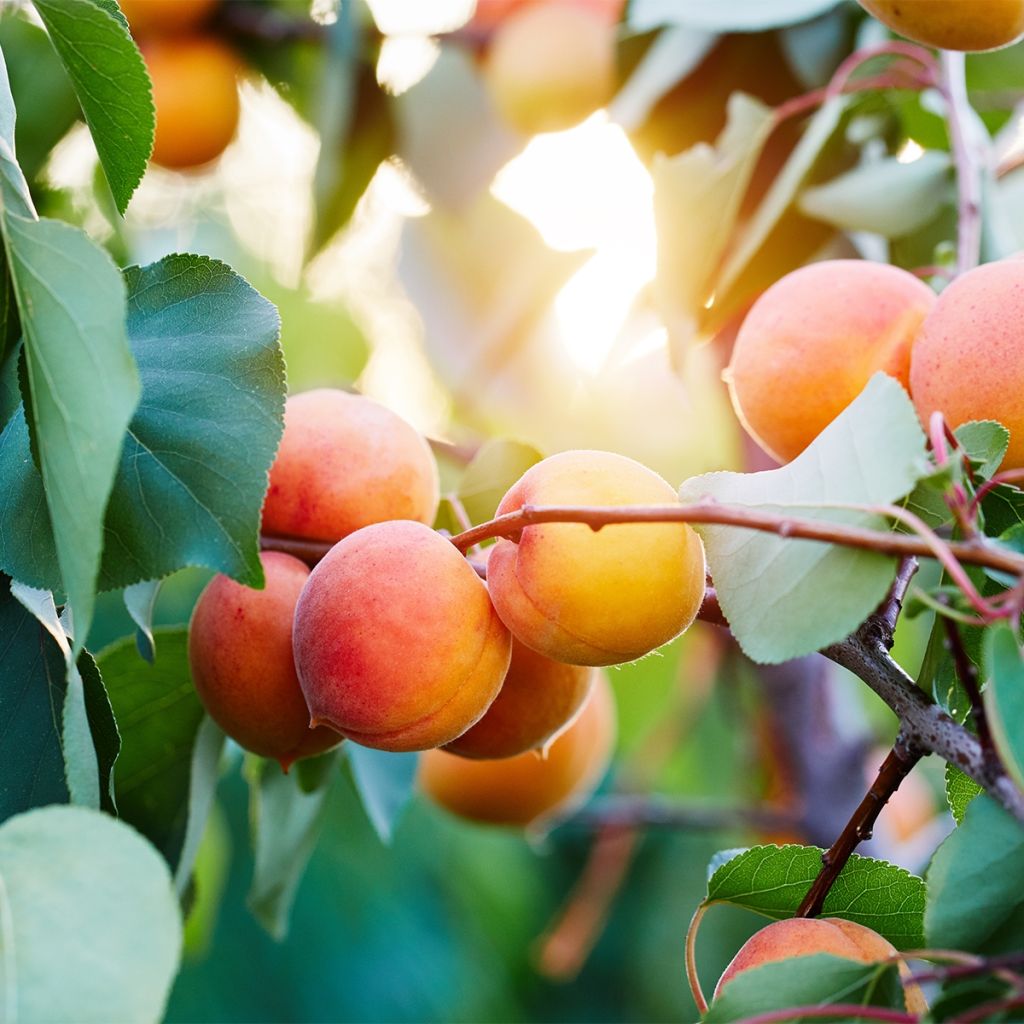

Prunus armeniaca Late Naked Bordaneil - Apricot Tree
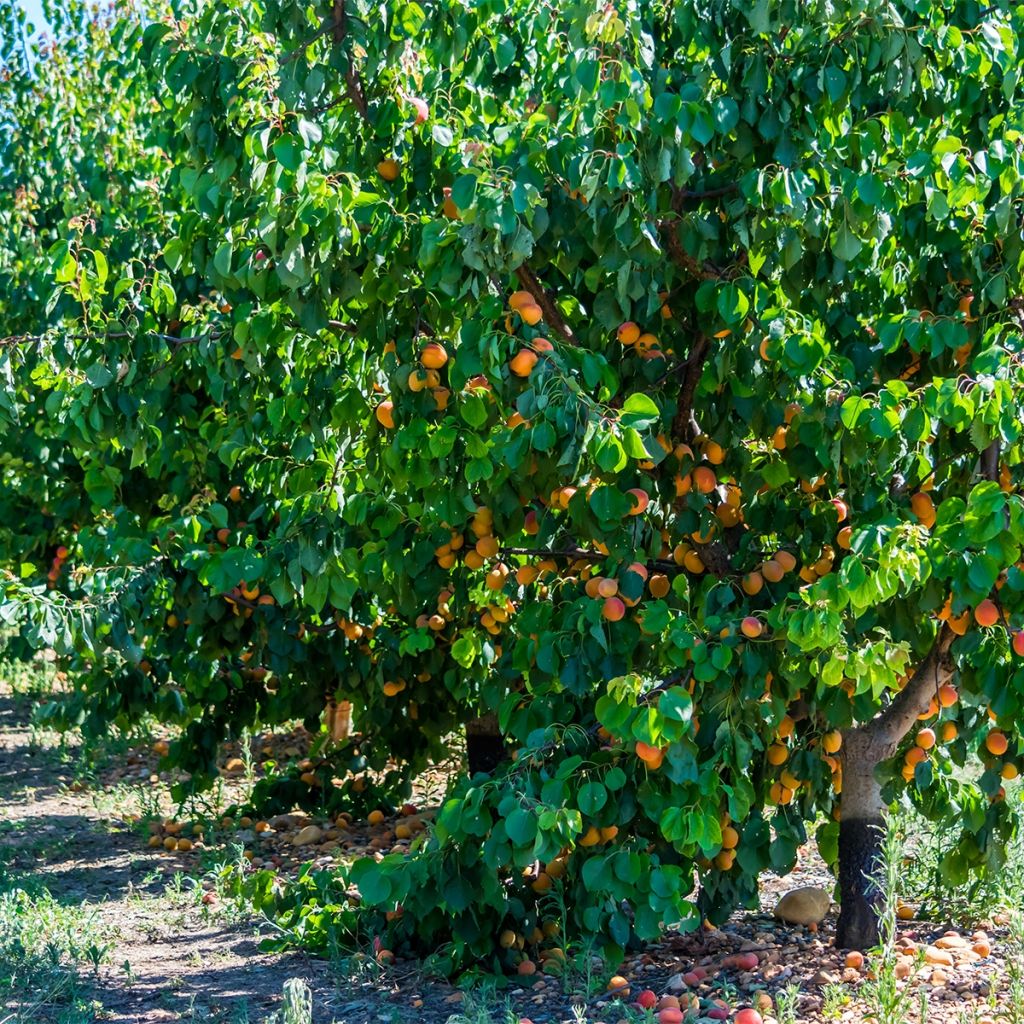

Prunus armeniaca Late Naked Bordaneil - Apricot Tree
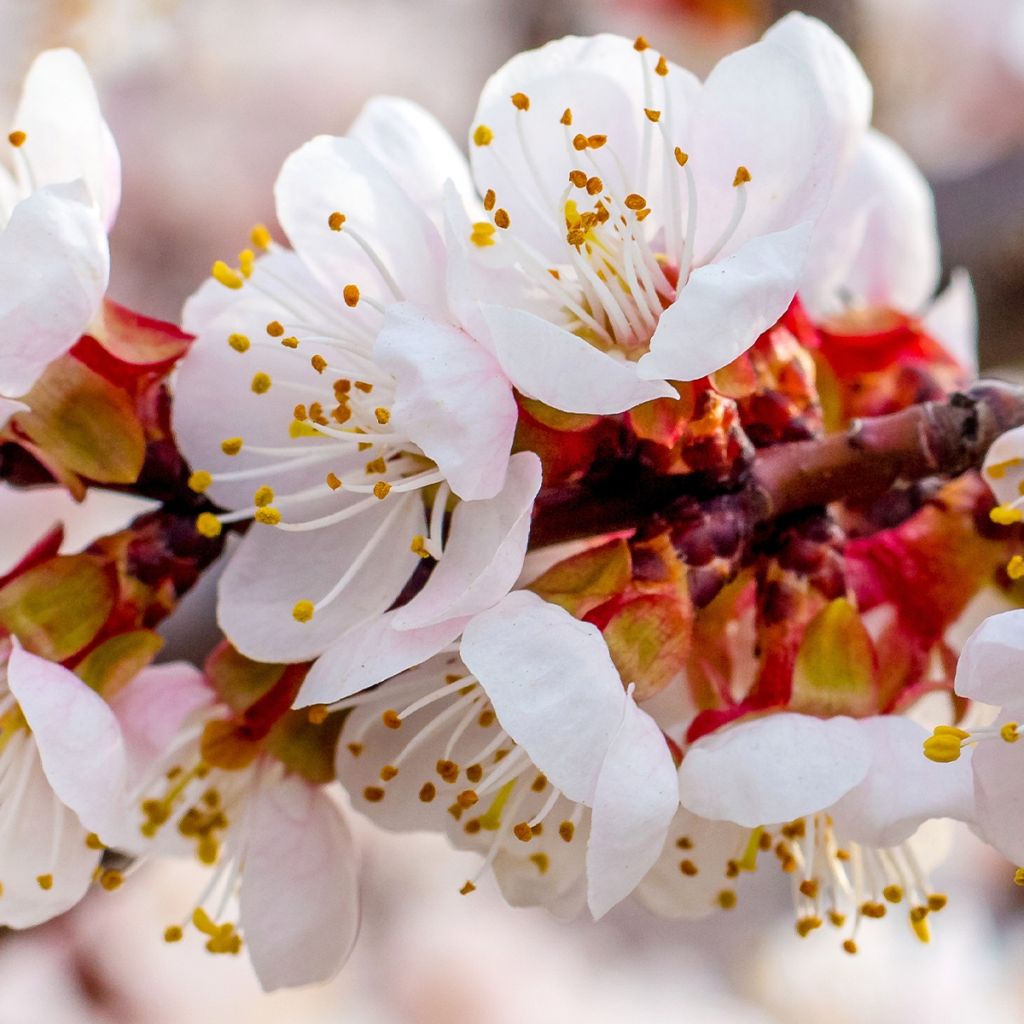

Prunus armeniaca Late Naked Bordaneil - Apricot Tree
Prunus armeniaca Late Naked Bordaneil - Apricot Tree
Prunus armeniaca Tardif De Bordaneil
Apricot Tree
Why not try an alternative variety in stock?
View all →This plant carries a 6 months recovery warranty
More information
We guarantee the quality of our plants for a full growing cycle, and will replace at our expense any plant that fails to recover under normal climatic and planting conditions.
Oversize package: home delivery by special carrier from €6.90 per order..
Express home delivery from €8.90.
Delivery to Corse prohibited: UE law prohibits the import of this plant from mainland France to Corse as part of the fight against Xylella fastidiosa. Please accept our sincere apologies.
More information
Description
The Prunus armeniaca Late Bordaneil is one of the latest varieties of apricot. It is therefore a fruit tree well adapted to cold areas where late frosts are frequent. A tree of fairly compact size, it produces large orange and red fruits with firm, sweet, and juicy flesh in August. It needs to be planted in the sun, but tolerates most soil types, even limestone, provided they are well-drained. This variety is self-fertile and therefore does not require the planting of another variety to produce its fruits.
The apricot tree (Prunus armeniaca in Latin) is native to China, where it has been cultivated for two millennia. It was then introduced to the Mediterranean basin from Armenia, hence its name. It was named in 1753 by the great botanist and naturalist, Carl von Linné. Similar to many other fruit trees (apple, pear, plum and cherry) and to numerous ornamental plants, including the queen of flowers, the rose, the apricot tree is a member of the large Rosaceae family. but also numerous ornamental plants, including of course the queen of flowers, the rose... The Late Bordaneil apricot tree variety comes from a seed found in the Eastern Pyrenees. Flowering in April, it is one of the latest flowering varieties, which generally allows it to escape the last frosts in cold climates. With a hardiness of about -15°C, the apricot tree is well adapted to suit more northern climates It forms a medium-sized tree, approximately 5 m (16.4 ft) high and 3 m (9.8 ft) wide. Tolerant of most soil types, it even grows in limestone conditions. It prefers some humidity, provided that the soil drains sufficiently in winter, but is also quite resistant to dry conditions. The apricot tree has a rounded dome-shaped growth habit, with the branches growing in all directions, and hiding 2/3 of the trunk's height. The glossy green leaves are dentate, heart-shaped, and have a long petiole.
The flowering of the Late Bordaneil apricot tree sometimes appears in March, but more often in April in cold regions. It is carried by the previous year's branches. The flower has 5 petals, slightly pinkish-white, and produces ovoid-shaped fruits, large to very large in size, and reaches ripeness late in the season, in August. The fruits are very sweet and juicy, with firm and fragrant flesh. The skin is orange, with a wide red area on the sunny side. This variety is self-fertile and therefore does not require the presence of another apricot tree for pollination.
Apricots are consumed fresh, dried, or prepared: jams, tarts, compotes, apricots in syrup. They are also found in savory dishes, such as rabbit with apricots and parsnips, an English recipe. Apricot juices are advantageously mixed with a touch of peach juice to counteract the natural acidity of the apricot.
The Late Bordaneil apricot tree can be the main focus of an orchard in cold climates, together with a Prunier Quetsche d'Alsace whose fruits ripen in September, extending the harvesting period. And to further extend the year, a Kaki 'Fuyu' will delight you with its vitamin C-rich fruits from October onwards.
Report an error about the product description
Prunus armeniaca Late Naked Bordaneil - Apricot Tree in pictures
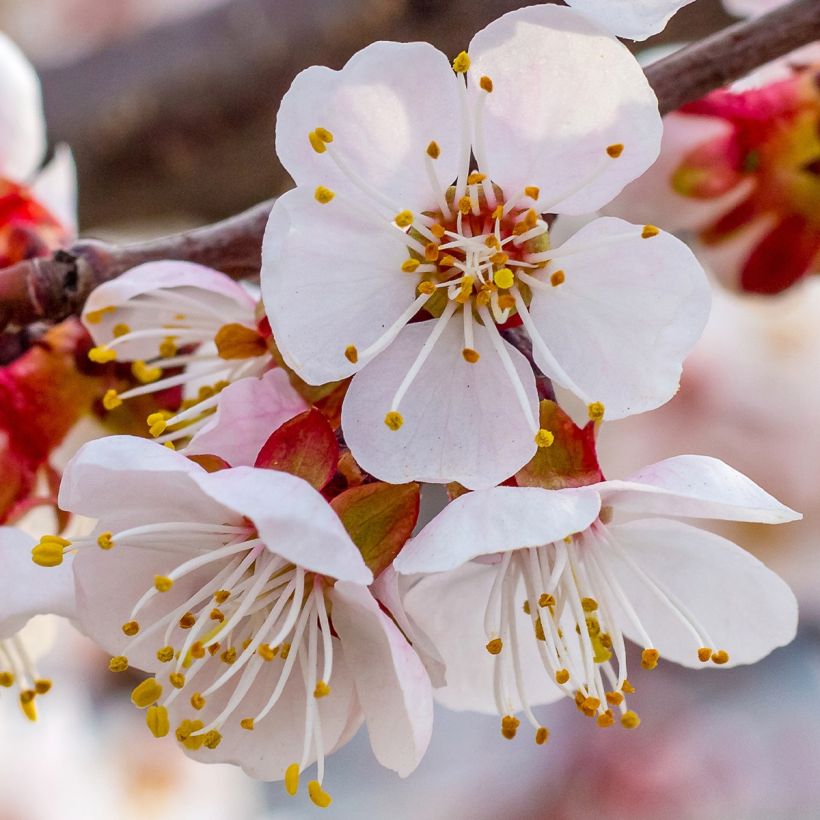

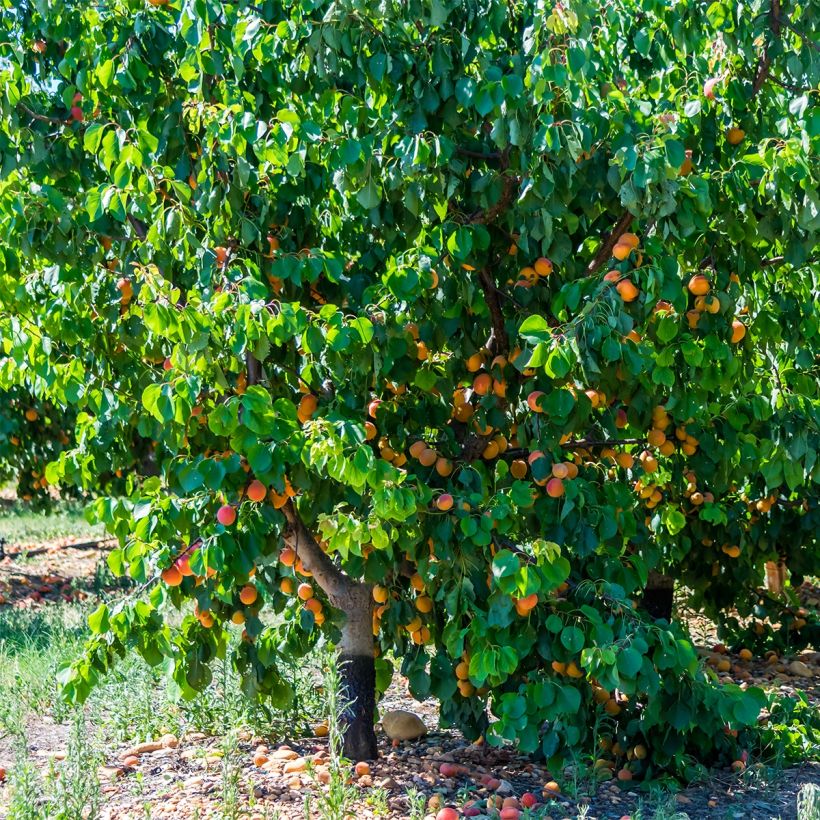



Plant habit
Fruit
Flowering
Foliage
Botanical data
Prunus
armeniaca
Tardif De Bordaneil
Rosaceae
Apricot Tree
Cultivar or hybrid
Other Apricot trees
Planting and care
The planting of the apricot tree preferably takes place at the beginning of winter, when the tree is in vegetative rest, and before the first frost. To plant several apricot trees, space them at least 1.5 m (3.3 ft.) apart. Dig a hole two to three weeks before planting, twice as wide and deep as the pot. On D-day, place the tree with its pot in a basin of water, in order to moisten the entire root ball by capillarity. Install compost at the bottom of the hole. Place the tree in the hole, fill with a mixture of soil and potting soil. The root ball should be completely covered. Compact by watering abundantly.
The Tardif de Bordaneil Apricot Tree is not very demanding with regards to soil type, and adapts well to limestone and dry soils in summer. It will ideally thrive in a rich and light, fresh, and above all well-drained soil. It does not tolerate heavy clay, suffocating, and excessively wet soils. Plant in a sunny location, and sheltered from the wind.
Planting period
Intended location
Care
-
, onOrder confirmed
Reply from on Promesse de fleurs
Haven't found what you were looking for?
Hardiness is the lowest winter temperature a plant can endure without suffering serious damage or even dying. However, hardiness is affected by location (a sheltered area, such as a patio), protection (winter cover) and soil type (hardiness is improved by well-drained soil).

Photo Sharing Terms & Conditions
In order to encourage gardeners to interact and share their experiences, Promesse de fleurs offers various media enabling content to be uploaded onto its Site - in particular via the ‘Photo sharing’ module.
The User agrees to refrain from:
- Posting any content that is illegal, prejudicial, insulting, racist, inciteful to hatred, revisionist, contrary to public decency, that infringes on privacy or on the privacy rights of third parties, in particular the publicity rights of persons and goods, intellectual property rights, or the right to privacy.
- Submitting content on behalf of a third party;
- Impersonate the identity of a third party and/or publish any personal information about a third party;
In general, the User undertakes to refrain from any unethical behaviour.
All Content (in particular text, comments, files, images, photos, videos, creative works, etc.), which may be subject to property or intellectual property rights, image or other private rights, shall remain the property of the User, subject to the limited rights granted by the terms of the licence granted by Promesse de fleurs as stated below. Users are at liberty to publish or not to publish such Content on the Site, notably via the ‘Photo Sharing’ facility, and accept that this Content shall be made public and freely accessible, notably on the Internet.
Users further acknowledge, undertake to have ,and guarantee that they hold all necessary rights and permissions to publish such material on the Site, in particular with regard to the legislation in force pertaining to any privacy, property, intellectual property, image, or contractual rights, or rights of any other nature. By publishing such Content on the Site, Users acknowledge accepting full liability as publishers of the Content within the meaning of the law, and grant Promesse de fleurs, free of charge, an inclusive, worldwide licence for the said Content for the entire duration of its publication, including all reproduction, representation, up/downloading, displaying, performing, transmission, and storage rights.
Users also grant permission for their name to be linked to the Content and accept that this link may not always be made available.
By engaging in posting material, Users consent to their Content becoming automatically accessible on the Internet, in particular on other sites and/or blogs and/or web pages of the Promesse de fleurs site, including in particular social pages and the Promesse de fleurs catalogue.
Users may secure the removal of entrusted content free of charge by issuing a simple request via our contact form.
The flowering period indicated on our website applies to countries and regions located in USDA zone 8 (France, the United Kingdom, Ireland, the Netherlands, etc.)
It will vary according to where you live:
- In zones 9 to 10 (Italy, Spain, Greece, etc.), flowering will occur about 2 to 4 weeks earlier.
- In zones 6 to 7 (Germany, Poland, Slovenia, and lower mountainous regions), flowering will be delayed by 2 to 3 weeks.
- In zone 5 (Central Europe, Scandinavia), blooming will be delayed by 3 to 5 weeks.
In temperate climates, pruning of spring-flowering shrubs (forsythia, spireas, etc.) should be done just after flowering.
Pruning of summer-flowering shrubs (Indian Lilac, Perovskia, etc.) can be done in winter or spring.
In cold regions as well as with frost-sensitive plants, avoid pruning too early when severe frosts may still occur.
The planting period indicated on our website applies to countries and regions located in USDA zone 8 (France, United Kingdom, Ireland, Netherlands).
It will vary according to where you live:
- In Mediterranean zones (Marseille, Madrid, Milan, etc.), autumn and winter are the best planting periods.
- In continental zones (Strasbourg, Munich, Vienna, etc.), delay planting by 2 to 3 weeks in spring and bring it forward by 2 to 4 weeks in autumn.
- In mountainous regions (the Alps, Pyrenees, Carpathians, etc.), it is best to plant in late spring (May-June) or late summer (August-September).
The harvesting period indicated on our website applies to countries and regions in USDA zone 8 (France, England, Ireland, the Netherlands).
In colder areas (Scandinavia, Poland, Austria...) fruit and vegetable harvests are likely to be delayed by 3-4 weeks.
In warmer areas (Italy, Spain, Greece, etc.), harvesting will probably take place earlier, depending on weather conditions.
The sowing periods indicated on our website apply to countries and regions within USDA Zone 8 (France, UK, Ireland, Netherlands).
In colder areas (Scandinavia, Poland, Austria...), delay any outdoor sowing by 3-4 weeks, or sow under glass.
In warmer climes (Italy, Spain, Greece, etc.), bring outdoor sowing forward by a few weeks.

































